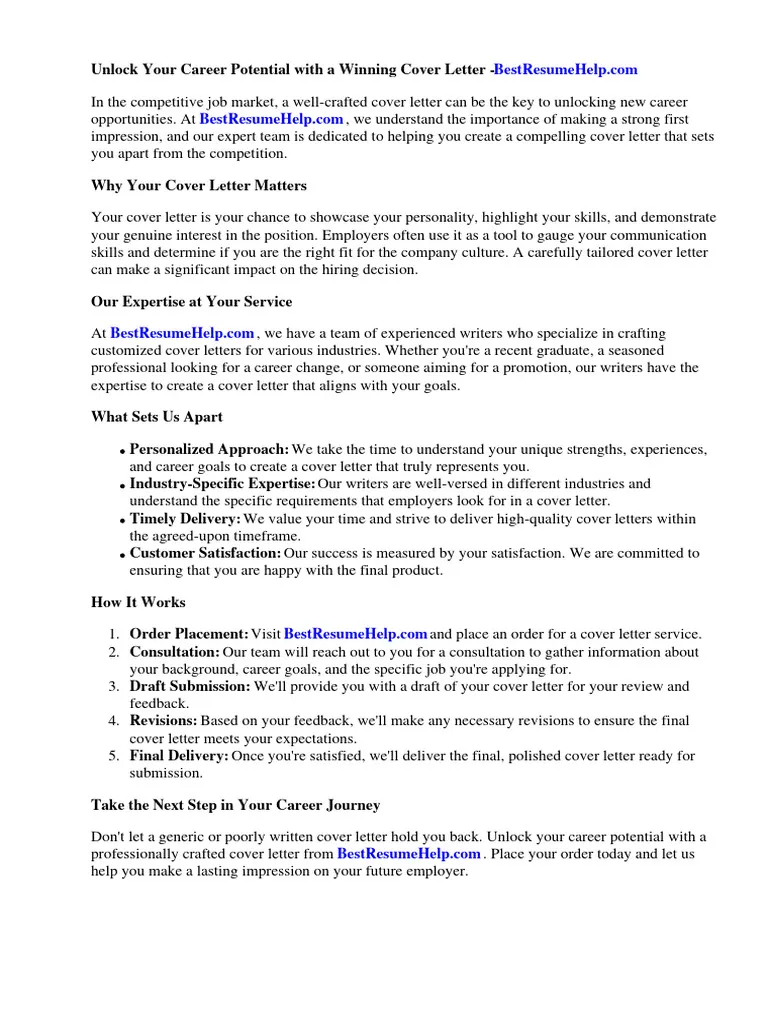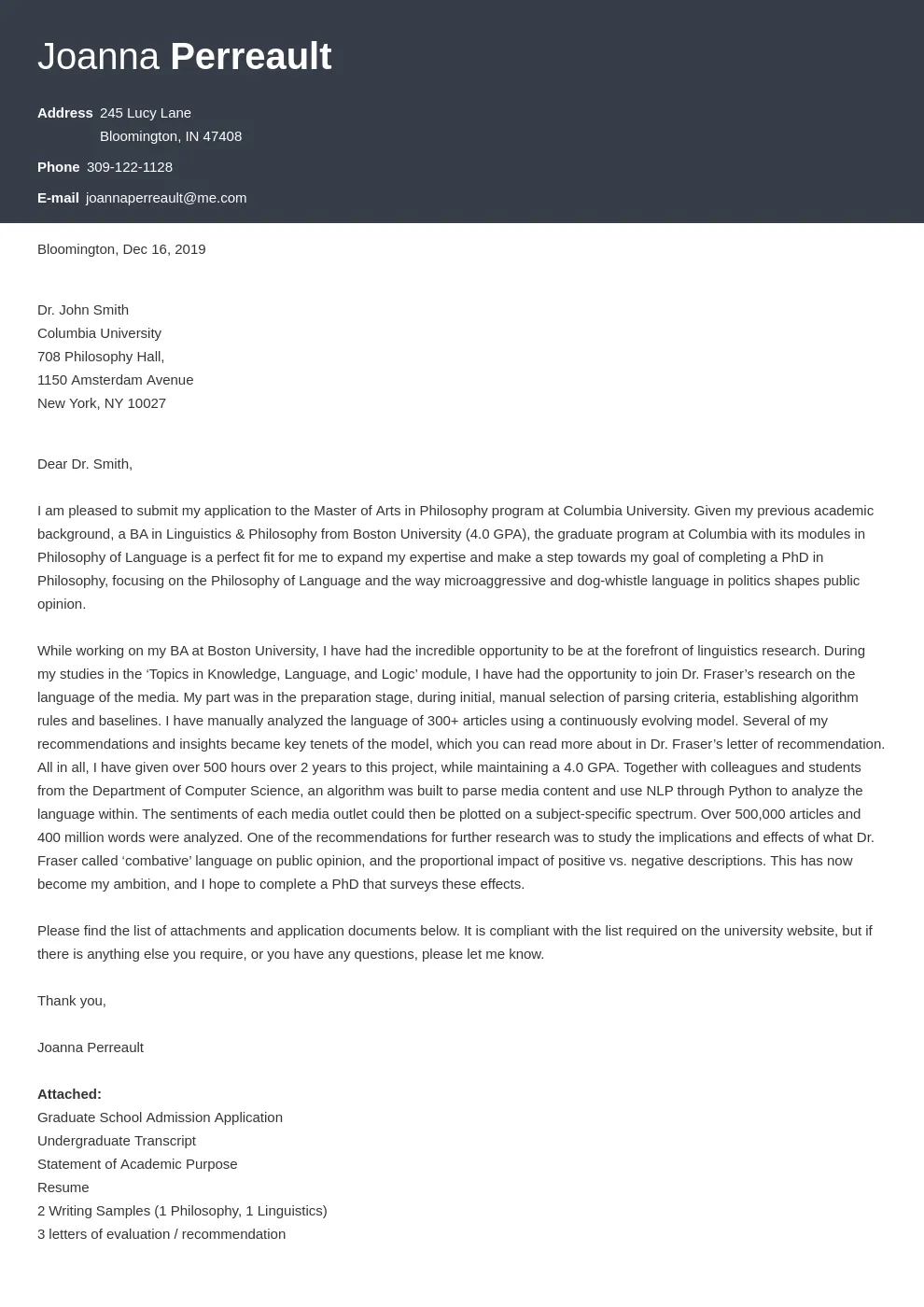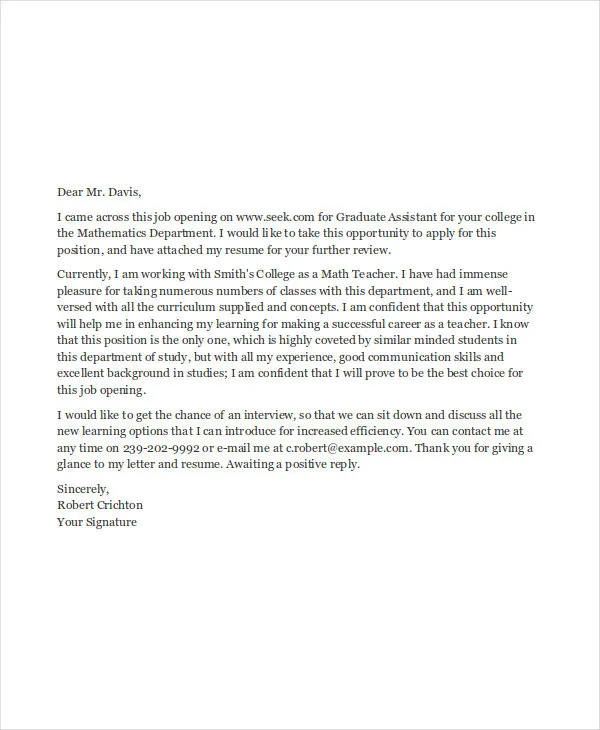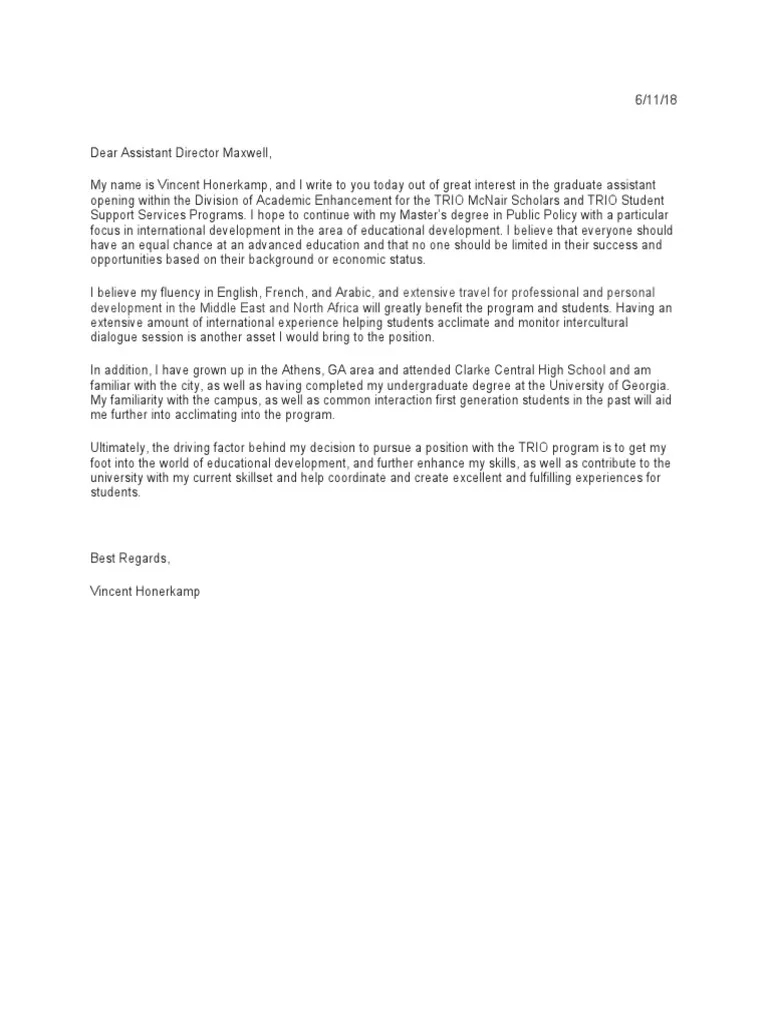Understanding the Graduate Assistantship Cover Letter
A graduate assistantship cover letter is more than just a formality; it’s your chance to make a strong first impression. Unlike a resume that provides a factual overview of your qualifications, the cover letter allows you to tell a story, showcasing your personality, passion, and suitability for the specific role. It’s a crucial document that can significantly influence whether you get shortlisted for an interview or not. This guide aims to equip you with the knowledge and strategies to craft a compelling cover letter that highlights your strengths and increases your chances of securing the desired assistantship.
Purpose of the Cover Letter
The primary purpose of a graduate assistantship cover letter is to persuade the selection committee that you are the best candidate for the position. This involves articulating your interest in the specific program and institution, demonstrating how your skills and experiences align with the assistantship requirements, and showcasing your enthusiasm for contributing to the academic environment. The cover letter also allows you to address any potential gaps in your application, such as explaining a career change or emphasizing specific aspects of your profile that may not be immediately evident from your resume. Furthermore, it provides a platform to express your unique qualities and motivations, setting you apart from other applicants.
Key Components of a Cover Letter

A well-structured cover letter consists of several essential components that work together to create a cohesive and persuasive narrative. These components include a professional header with your contact information, a formal salutation addressing the hiring manager by name whenever possible, a captivating opening paragraph, compelling body paragraphs that highlight your relevant skills and experiences, a tailored approach that aligns with the specific assistantship and program, and a strong closing paragraph that reiterates your interest and includes a call to action. Each component serves a specific purpose and contributes to the overall impact of your cover letter, making it essential to pay attention to each element.
Header and Contact Information
Begin your cover letter with a professional header that includes your full name, address, phone number, and email address. Ensure that the email address is professional and appropriate for academic correspondence. Avoid using nicknames or informal email addresses. The header should be clearly formatted and easy to read. It should be placed at the top of the page, either aligned to the left or centered. Following the header, include the date and the recipient’s contact information, including their name, title, department, and the university’s address. This demonstrates attention to detail and professionalism, making it easy for the hiring manager to contact you.
Addressing the Hiring Manager
Addressing the hiring manager by name shows that you have taken the time to research the program and the specific individuals involved in the hiring process. Whenever possible, find out the name of the person who will be reviewing your application. This demonstrates initiative and personalizes your letter. Using a generic salutation like ‘Dear Sir/Madam’ or ‘To Whom It May Concern’ is acceptable if you cannot find a specific name, but it’s always best to personalize it. If you do not know the name, try to find it on the department’s website, LinkedIn, or by contacting the department directly. Use formal titles such as ‘Dr.’ or ‘Professor’ if applicable.
Opening Paragraph: Grab Attention

The opening paragraph is your first opportunity to capture the reader’s attention. It should be concise, engaging, and clearly state your purpose for writing—to apply for the graduate assistantship. Avoid generic opening lines like, ‘I am writing to express my interest.’ Instead, consider a more impactful approach, such as mentioning something specific that sparked your interest in the program or highlighting a key achievement or skill relevant to the assistantship. This is your chance to make a memorable first impression. State the specific assistantship you are applying for and where you found the listing.
Highlighting Your Skills and Qualifications
The body of your cover letter should focus on highlighting your skills and qualifications that are most relevant to the assistantship requirements. This section is your opportunity to demonstrate how your experiences and abilities align with the needs of the program. Instead of simply restating your resume, provide specific examples that showcase your accomplishments and the impact you’ve made. Use the job description as a guide to identify the key skills and qualifications the hiring committee is looking for, and then tailor your examples to match those requirements. Quantify your achievements whenever possible, providing concrete evidence of your capabilities.
Academic Achievements and Relevant Experience
Detail your academic achievements and relevant experiences to showcase your qualifications for the graduate assistantship. This may include your GPA, relevant coursework, honors, and awards. If you have any publications, presentations, or conference attendance, be sure to mention them. Include any research experience, teaching experience, or administrative experience that is relevant to the assistantship. For each experience, briefly describe your role, the tasks you performed, and the outcomes you achieved. Quantify your accomplishments whenever possible. For instance, mention the number of students you assisted or the impact of your research.
Skills to Showcase

Identify the skills that the hiring committee is looking for, such as communication, leadership, research, teaching, and technical skills. Provide specific examples of how you have utilized these skills in the past. For instance, if the assistantship involves teaching, describe your experience leading discussion sections or giving presentations. If it involves research, highlight your experience with data analysis, literature reviews, or experimental design. Use action verbs to describe your achievements, such as ‘managed,’ ’led,’ ‘developed,’ ‘analyzed,’ and ‘presented.’ This will make your cover letter more dynamic and engaging.
Research Experience and Projects
If the graduate assistantship involves research, provide details about your research experience and any relevant projects you’ve worked on. Describe the research methods you used, your role in the project, and the findings you contributed to. Mention any publications, presentations, or awards related to your research. If you have experience with specific software, equipment, or research techniques, be sure to mention them. Emphasize your ability to conduct independent research, analyze data, and contribute to a research team. This section should demonstrate your research expertise and show that you are well-prepared for the assistantship.
Tailoring Your Cover Letter
One of the most crucial aspects of a successful cover letter is tailoring it to the specific assistantship and program. Avoid using a generic cover letter for multiple applications. Instead, carefully review the job description and identify the key skills, qualifications, and requirements. Then, use this information to customize your letter, emphasizing the experiences and abilities that align with the position. Show that you have researched the program, understand its goals, and are genuinely interested in contributing to its success. This will demonstrate your enthusiasm and attention to detail, making a strong impression on the selection committee. Show your interest for the university specifically.
Researching the Program and Department

Before writing your cover letter, thoroughly research the program and department you are applying to. Visit the department’s website to learn about its faculty, research areas, and curriculum. Read publications by the faculty members, and understand the department’s mission and values. This research will allow you to tailor your letter to the specific program, showing your interest and alignment with their goals. Mention specific faculty members whose research aligns with your interests, or highlight specific courses that you are excited to take. This demonstrates your knowledge and genuine enthusiasm for the opportunity.
Matching Skills to Requirements
Carefully review the job description and identify the required skills and qualifications. Then, review your experiences and identify the skills that align with those requirements. Use specific examples to demonstrate how you have utilized these skills in the past. For instance, if the job description requires strong communication skills, describe your experience giving presentations, leading discussions, or writing reports. If it requires organizational skills, highlight your experience managing projects or coordinating events. By explicitly matching your skills to the requirements, you make it easier for the selection committee to see that you are a good fit for the assistantship.
Using Keywords Strategically
Incorporate keywords from the job description into your cover letter. This helps the hiring committee quickly identify that you meet the requirements of the assistantship. However, avoid keyword stuffing, which can make your letter sound unnatural and forced. Instead, use keywords naturally within the context of your writing. For example, if the job description mentions ‘data analysis,’ use that phrase when describing your experience with statistical software or analyzing research data. This strategic use of keywords will help your cover letter stand out and ensure that the selection committee recognizes your qualifications.
Formatting and Presentation

The formatting and presentation of your cover letter are as important as the content. A well-formatted cover letter is easy to read and makes a positive impression. Use a clear and professional font, such as Times New Roman, Arial, or Calibri, and keep the font size between 10 and 12 points. Use single-spacing within paragraphs and double-spacing between paragraphs. Maintain consistent margins throughout the document and use a standard letter format, such as the block format or modified block format. Ensure your letter is free of grammatical errors and typos. Carefully proofread and edit your cover letter before submitting it, or ask a friend or advisor to review it.
Choosing the Right Font and Layout
The choice of font and layout can significantly impact the readability and overall appearance of your cover letter. Choose a professional and easy-to-read font such as Times New Roman, Arial, or Calibri. Avoid using overly decorative or unusual fonts, as they can make your letter look unprofessional. Maintain a consistent font size, typically between 10 and 12 points. Use a standard letter format, such as the block format, where all text is left-aligned, or the modified block format, where your contact information, date, and closing are right-aligned. Use clear headings and subheadings to organize your content and make it easy for the reader to scan your letter. Use appropriate spacing, leaving a space between paragraphs and sections.
Proofreading and Editing
Proofreading and editing are essential steps in the cover letter writing process. Ensure that your letter is free of any typos, grammatical errors, or punctuation mistakes. These errors can create a negative impression and undermine your credibility. After writing your cover letter, take a break and then reread it with fresh eyes. Use a spell checker and grammar checker, but don’t rely solely on these tools. Ask a friend, professor, or career advisor to review your cover letter and provide feedback. They can help you catch any errors that you might have missed and ensure that your letter is clear, concise, and persuasive. A polished cover letter demonstrates attention to detail and professionalism.
Common Mistakes to Avoid

Avoid common mistakes that can negatively impact your cover letter. These include generic language, lack of specific examples, typos, grammatical errors, and focusing too much on what you want without showing how you can contribute to the program. Avoid using clichés and overly formal language. Instead, strive for clear, concise, and engaging language. Ensure that your cover letter is tailored to the specific assistantship and program. Proofread your letter carefully before submitting it. By avoiding these common pitfalls, you can significantly increase your chances of success.
Generic Language and Lack of Specificity
One of the biggest mistakes applicants make is using generic language and failing to provide specific examples. Avoid using vague statements such as ‘I am a hard worker’ or ‘I am a team player.’ Instead, provide specific examples that demonstrate your skills and accomplishments. For instance, describe a project you worked on, the challenges you faced, and the outcomes you achieved. Quantify your achievements whenever possible. For example, state that you increased sales by a certain percentage or reduced costs by a specific amount. Show, don’t just tell, and provide evidence to support your claims. Use action verbs and tailor your language to the specific requirements of the assistantship.
Typos and Grammatical Errors
Typos and grammatical errors can undermine your credibility and make a negative impression on the hiring committee. These errors suggest a lack of attention to detail and a lack of professionalism. Before submitting your cover letter, carefully proofread it multiple times. Use a spell checker and grammar checker, but don’t rely solely on these tools. Read your letter aloud to catch any errors that you might have missed. Ask a friend, professor, or career advisor to review your letter and provide feedback. A polished cover letter free of errors demonstrates attention to detail and significantly increases your chances of securing the assistantship. Proofread for grammar and punctuation.
The Closing Paragraph: Call to Action

The closing paragraph is your final opportunity to make a strong impression and express your enthusiasm. Reiterate your interest in the assistantship and the program, and thank the hiring manager for their time and consideration. Include a call to action, such as expressing your availability for an interview or stating that you look forward to hearing from them soon. Be professional and confident in your tone. Avoid using clichés or overly formal language. Express your enthusiasm in a genuine and sincere manner. A strong closing paragraph leaves a positive lasting impression and increases your chances of getting an interview.
Expressing Enthusiasm and Availability
In your closing paragraph, express your enthusiasm for the assistantship and the program. Reiterate your interest in contributing to the department and highlight why you are a strong candidate. Include a call to action, such as expressing your availability for an interview or stating that you look forward to hearing from them soon. Be specific and mention the best way to contact you. For example, you might say, ‘I am available for an interview at your earliest convenience and can be reached at [your phone number] or [your email address].’ A well-crafted closing paragraph demonstrates your enthusiasm and professionalism, making it more likely that you will be contacted for an interview.
Offering References and Contact Information
While you typically don’t need to provide a list of references in your cover letter, you can mention that you are happy to provide references upon request. You can also include your contact information again in the closing paragraph to make it easy for the hiring manager to reach you. Ensure that the contact information is accurate and up-to-date. For example, you might say, ‘I have included my resume for your review and am available for an interview at your earliest convenience. You can reach me at [your phone number] or [your email address].’ Providing your contact information again makes it easy for the hiring manager to take the next step and contact you.
